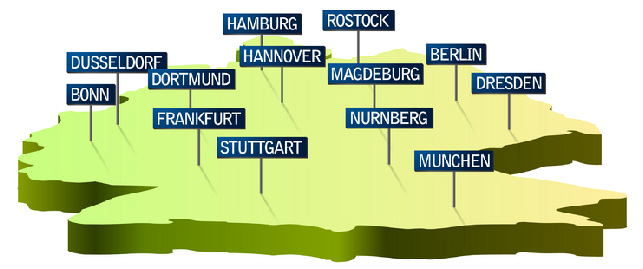
Germany currently represents roughly half the total global market for solar components--all thanks to explosive growth it fueled over the past decade through attractive solar subsidies. However, as the country is now dialing back its subsidy programs, solar companies will be scrambling to find the next big growth market for 2011 and beyond. New analysis from Lux Research indicates no single country will match Deutschland’s meteoric growth over the past few years, and it provides strategic insights on which markets offer the strongest potential in 2011 and beyond.
“Component manufacturers looking to maintain margins in the face of rapidly falling prices will find short-term relief from markets offering attractive subsidies in 2011,” said Jason Eckstein, a Lux Research analyst and the report’s lead author. “However, to be able to plan for long-term solar growth, companies also need to consider other factors, such as the size of a country’s electricity market, what other generation sources it can tap, and the quality of its electrical distribution infrastructure.” The report constructs a quantitative model for all 15 markets, based on the value of subsidies, market size, solar generation’s proximity to grid parity, and numerous other factors. It ranks each country on two axes--measuring short-term demand drivers and long-term market potential. Based on their positioning in either axis, markets fall into one of four market classes: Fast Burners, Top Targets, Slow Movers, and Weak Prospects.
Cyprus, Israel, and Malaysia are Fast Burners. Although these markets offer some of the most valuable subsidies, they all face fundamental limits on the extent to which solar can grow. Cyprus, in particular, cannot support more than a few hundred megawatts of solar installations, while Israel and Malaysia are capped close to 3 GW.
India stands out as a Top Target, but South Africa and the U.K. could also be game-changers. India combines a heavily-funded subsidy scheme with a grid in great need of distributed generation and huge projected electricity consumption. South Africa has a significantly more attractive subsidy scheme but is limited to utility-scale applications and faces regulatory uncertainty. The U.K. has a comparatively weak solar resource, but faces tight natural gas supply, has a broad set of Feed-in Tariff (FiT) incentives, and boasts a potential market size over 20 GW.
Russia, Brazil, and Mexico are all Slow Movers. All offer huge electricity markets with over 10 GW of solar development potential, but lack incentive schemes. Brazil cancelled an FiT policy early last decade, yet it’s one of the markets closest to grid parity and offers massive potential demand. Mexico has enforced a national net metering policy, making it a likely future champion of solar as a distributed resource. Meanwhile, Russia offers few demand drivers in 2011, but the largest potential addressable solar market at over 80 GW.
Further Information: Lux Research (http://www.luxresearchinc.com/)
For more information, please send your e-mails to pved@infothe.com.
ⓒ2010 www.interpv.net All rights reserved. |



